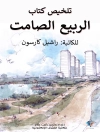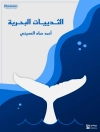This is the first textbook to consider all aspects of the cryosphere system in the context of global environmental change driven by human activity and climate.
- Considers all six aspects of the cryosphere – ice sheets, glacier ice, permafrost, river and lake ice, sea ice and snow – in the context of global environmental change driven by human activity and climate.
- Describes a new concept of cryosphere transience and landscape transition which links climate, hydrology, ecology and geomorphology.
- Looks at the evidence, process, and patterns of cryosphere change, on local and global scales.
- Provides a wealth of data to inform the current global environmental change debate.
Additional resources for this book can be found at: bcs.wiley.com/he-bcs/Books?action=index&bcs Id=5064&item Id=140512976X
قائمة المحتويات
Preface.
1. The Evidence for Cryospheric Change.
2. The Monitoring of Cryospheric Change.
3. Processes of Cryospheric Change.
4. Patterns of the Contemporary Cryosphere at Local to Global Scales.
5. The Evidence for Past Cryospheric Changes.
6. The Transience of the Cryosphere and Transitional Landscapes.
7. Cryospheric Change and Vulnerability at Quaternary, Holocene, and Anthropocene Timescales.
References.
Index
عن المؤلف
Professor Slaymaker’s research has four foci: mountain hydrogeomorphology, land use impacts, sustainable development and global environmental change. From 1994-2002 he was a Governor of the International Development Research Centre in Ottawa.
Professor Kelly’s research focuses on the use of measurements from remote sensing ground, aircraft and satellite instruments coupled with environmental models to better understand the cryosphere, especially snow and ice environments. He is also interested in the development of new technologies for improved direct in situ and remote sensing measurements of the cryosphere.












